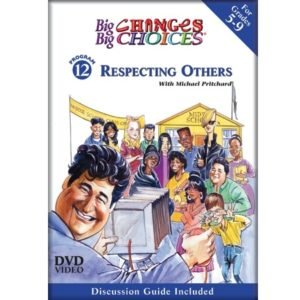Flirting or Hurting? When Is It Okay, When Is It Harassment?
$129.95
-For Grades 5-9
-DVD + Printable Teaching Guide
Even for adults, it can be challenging to figure out what actions and words constitute flirting and what behaviors cross the boundaries into sexual harassment. For middle schoolers, who are just making their entry into a more complex social world, these distinctions are often beyond their grasp.
- Description
Description
Even for adults, it can be challenging to figure out what actions and words constitute flirting and what behaviors cross the boundaries into sexual harassment. For middle schoolers, who are just making their entry into a more complex social world, these distinctions are often beyond their grasp. This program uses a blend of realistic dramatic scenarios, on-screen narrators and a round table discussion featuring real students to show young viewers the difference between real flirting (welcome, wanted, respectful and fun) and hurting (unwelcome, unwanted, one-sided, makes you feel bad). Viewers learn what it means to cross the line-whether in person, through texting or on-line-and are reminded of the serious consequences for both the target and the harasser. Helpful “flirting” tips are offered by an expert as well as advice on how to react to behaviors that are not appropriate or welcome.
Includes: 20-minute video, printable teacher’s resource book, and student handouts with pre/post tests.
DVD contains Spanish subtitles.
Sample Video Clip:
Awards:
Bronze Telly Award
Reviews:
Recommended This informative program is designed to help teens new to the dating world distinguish between flirting and sexual harassment. The program is easily navigated via the main menu. Users can jump to specific chapters or play the entire program. Hosted by two teens, the program presents scenarios of students in various situations that are either “flirting or hurting.” A small discussion group of teens is shown with the founder of Respect Rx. The group discusses flirting, harassment and the use of technology in harassment. The accompanying binder provides a summary of the program, useful worksheets, and action plans if students encounter harassment. The DVD also offers solutions for those being harassed, and how to tell whether you’ve crossed the line. It would have been helpful to have the ability yo jump to the discussion groups, but overall, this program is very well done. It clearly explains to students how to read someone’s reactions and determine if one’s advances are welcome or not.
– Allison L. Bernstein, Educational Materials Reviewer, Cortlandt Manor, NY
Library Media Connection
What’s the difference between flirting and hurting? Two teenage hosts take viewers inside a middle school and show three different scenarios taking place. Courtney Macavina, founder of Respect Rx, a California-based respect-building program for teens, asks a group of middle school boys and girls, “What is flirting.” They reply that flirting is comfortable and respectful. The scene then switches to the first vignette where Leah and Jeremy are working independently in the library. Jeremy is trying to write a paper, but Leah insists on interrupting him. He admonishes her when she tries to massage his shoulders, so she returns to her computer and messages him that he has a sexy body. He ignores her taunts, but she latches onto his arm when he leaves the library. He pulls away, telling her that he thinks she’s cool but he’s not interested. She retaliates by posting hateful things about him on the Internet. Viewers learn that sexual harassment is against the law; it happens to both boys and girls; and it can be verbal, physical, and spread through rumors, texting, email, or posting online. The recipient feels uncomfortable, angry, and stressed. The second scenario takes place in the art room. Tony and Martina are interested in each other, and they welcome each other’s attention. In the next scenario, Jason crosses the line when he messages a girl asking if she likes to make out. When she doesn’t answer, he realizes his mistake and apologizes. They agree to try to start the relationship again. Throughout the video, the hosts compare the scenarios, highlighting the differences between respectful and unwanted attention. An effective presentation for middle school students.
—Robyn Gioia, Bolles School, Ponte Vedra, FL
School Library Journal
–










